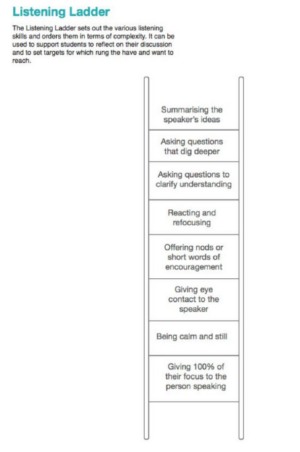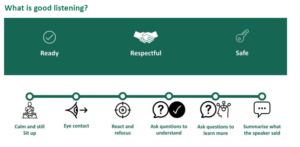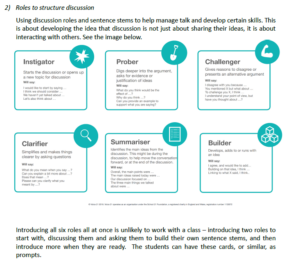09.05.23How Millfield School Socializes Positive Listening and Discussion Behaviors, School-Wide

Without the listening part, it’s not going to be much of a discussion…
I recently had the pleasure of working with teachers at Millfield School in Somerset (England). The topic was classroom discussions and how to make them more effective by 1) socializing students to listen better and 2) socializing them to talk to rather than past each other… to build off of and develop one another’s ideas and to signal appreciation for what classmates said.
We discussed this outstanding video of Ben Hall rolling out Habits of Discussion with his students at Ipswich Academy, for example, and they like so many schools loved the explanatory slide Ben and his colleagues developed to help build those behaviors into the fabric of classrooms.

As part of the preparation for my session at Millfield Deputy Head Alex Haydon shared a booklet the school had developed to guide their work on the Oracy Project they’d developed. The booklet developed some of these in really useful ways that, aith Alex’s approval, I thought I’d share a few things I loved.
First the booklet is explicit about the central role of listening in any discussion. It’s something we can and must teach when students talk and these two pages from the booklet do a great job IMO of naming clear and important foundational behaviors so teachers can reinforce them with students.


I also loved this framing of “discussion roles.” It’s similar to what Ben and company put together at Ipswich Academy but it adds additional roles for students to take on. Naming that they can seek probe and clarify adds real value, I think. But I also love the guidance at the bottom: don’t try to teach (or ask students to use) all six roles at once. Let them learn them a few at a time. It’s great practical advice.

Lastly I love the idea of all of this being in a booklet for staff so everyone is on the same page, has common vocabulary, and has a shared vision of what they model they aspire to in classroom discussion. Obviously these sorts of norms work best when everyone in the school is working on them at the same time.
It’s great stuff… and not to late to borrow or adapt for this year!
